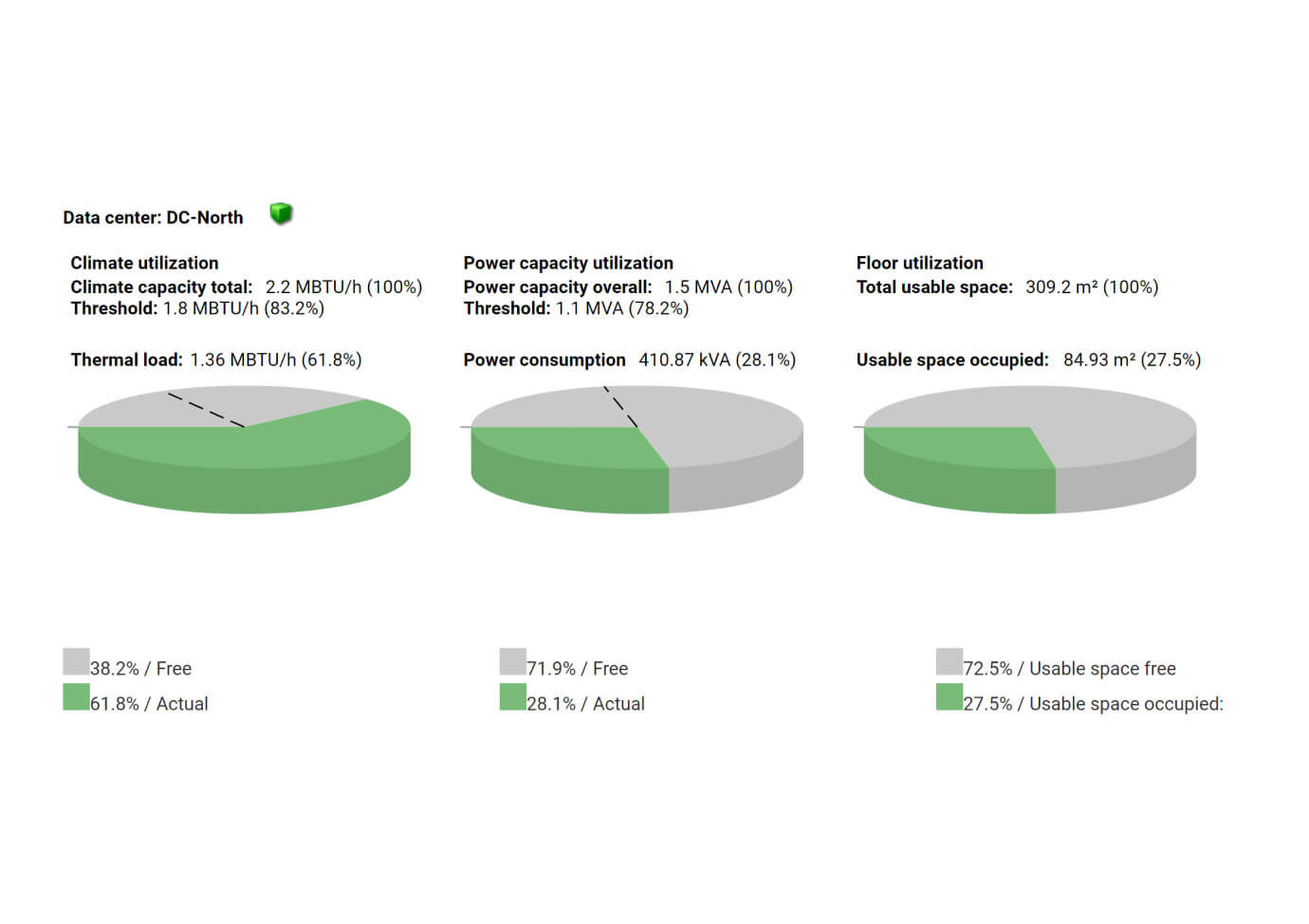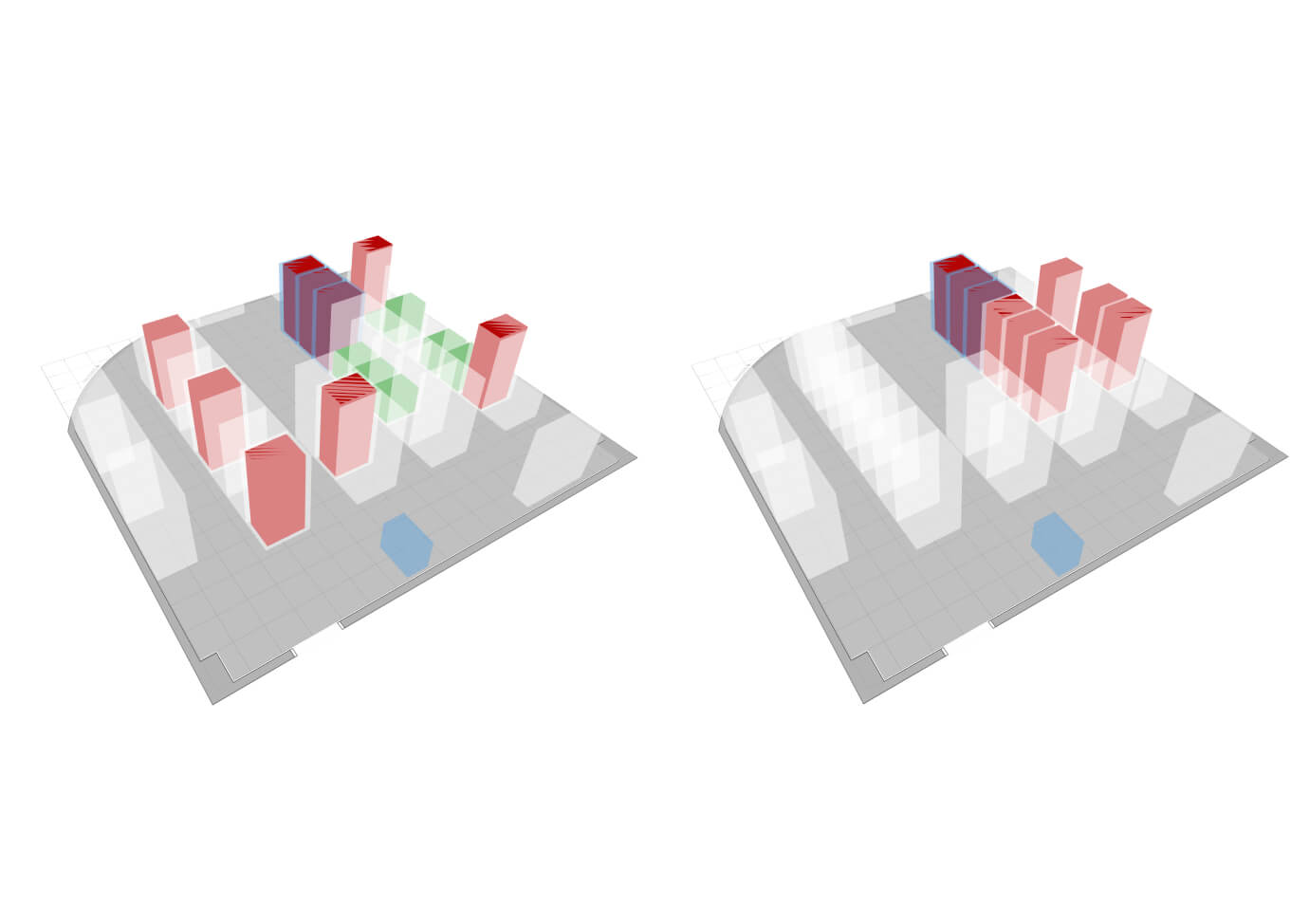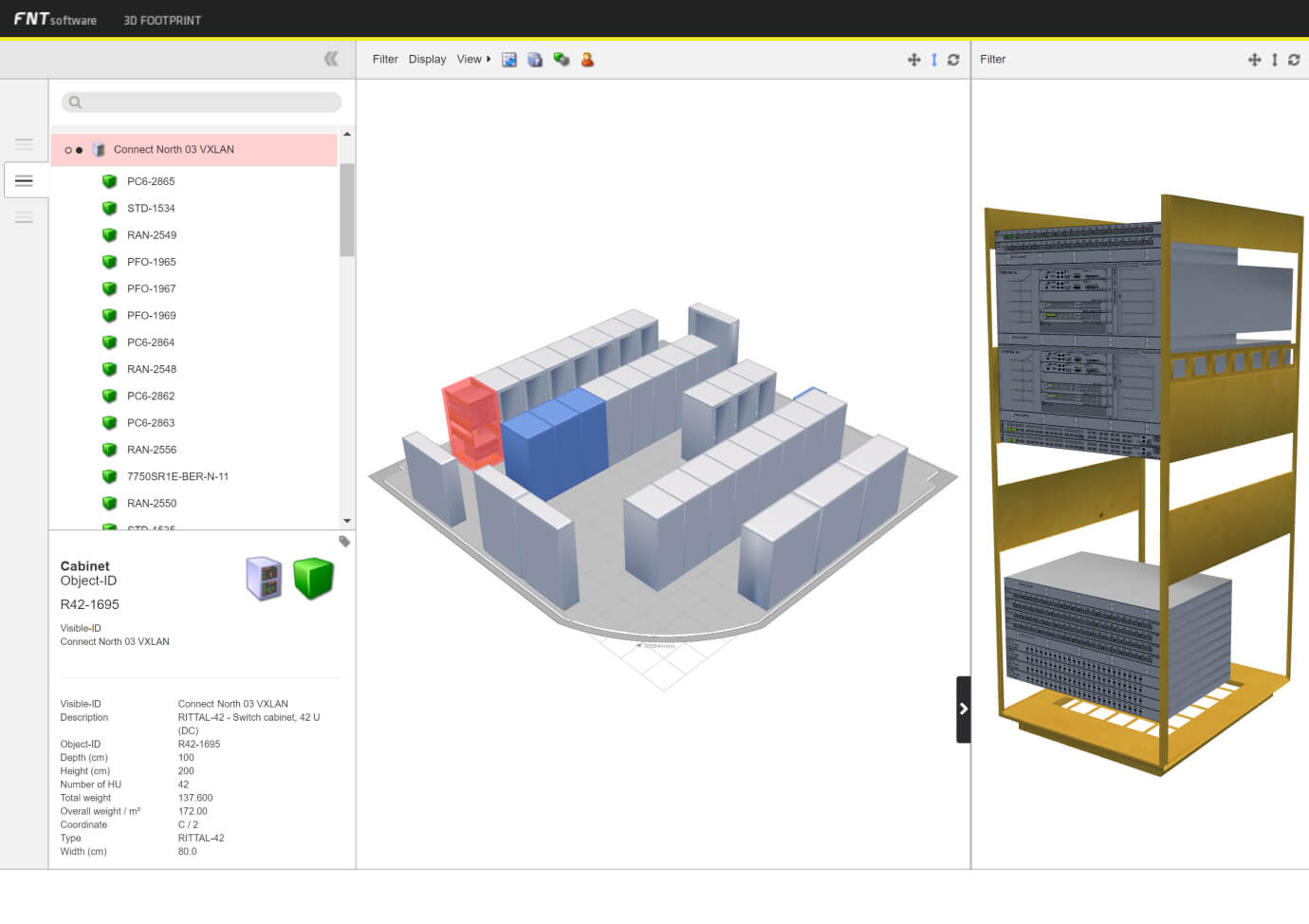DC capacity planning without live data makes expansion costly
Your organization must have faced the following problem: you have to manage power, cooling, and space capacity in your data center, but the only consumption projections you have are based on data sheets from vendors.
If you follow this approach, you regularly end up with either having too much or insufficient capacity. In both cases, you face a problem. In the former, your CFO has to invest more than is needed, and in the latter, you have to source funds that were not planned in advance.
You also want to prevent the situation where a new device is added to a rack and exceeds the maximum allowed capacity.
So, what’s the best approach?
The most reliable one is to measure actual consumption in your data center, and based on real historical data, project future capacity expansion needs.
DC infrastructure management software to the rescue
UMBOSS is built to consolidate data from fault and performance management, network and data center inventory, and other BSS/OSS systems. It collects all network, computing, and environmental variables and thus serves as a great foundation for the capacity planning of your data center. However, the solution you need has to have precise DC resource inventory.
UMBOSS can integrate with any external DC resource management software and is tested against FNT Software’s solution FNT Data Center Management:
FNT DCIM solution video
FNT Data Center Management tracks capacity and live consumption data provided by UMBOSS. Various dashboards are used to visualize capacity versus actual consumption. You easily see how far you currently are from reaching critical threshold values.

Example graphs from FNT Data Center Management

Example screenshots from FNT Data Center Management
FNT Data Center Management supports documentation and planning modes. Planning mode is engaged prior to adding new devices into the DC as part of the change management process. When in planning mode, the software correlates live data with documented capacity and provides feedback when cooling or power capacity is about to be exceeded.
Capacity expansion is also supported. By using historical live and planned data, it provides a forecast of future capacity needs, assuming trends remain the same. The software automatically determines the future point of time in which capacity will be exceeded and provides KPIs to be used for planning.

Example screenshot from FNT Data Center Management
Capacity management of your DC delivers many benefits














